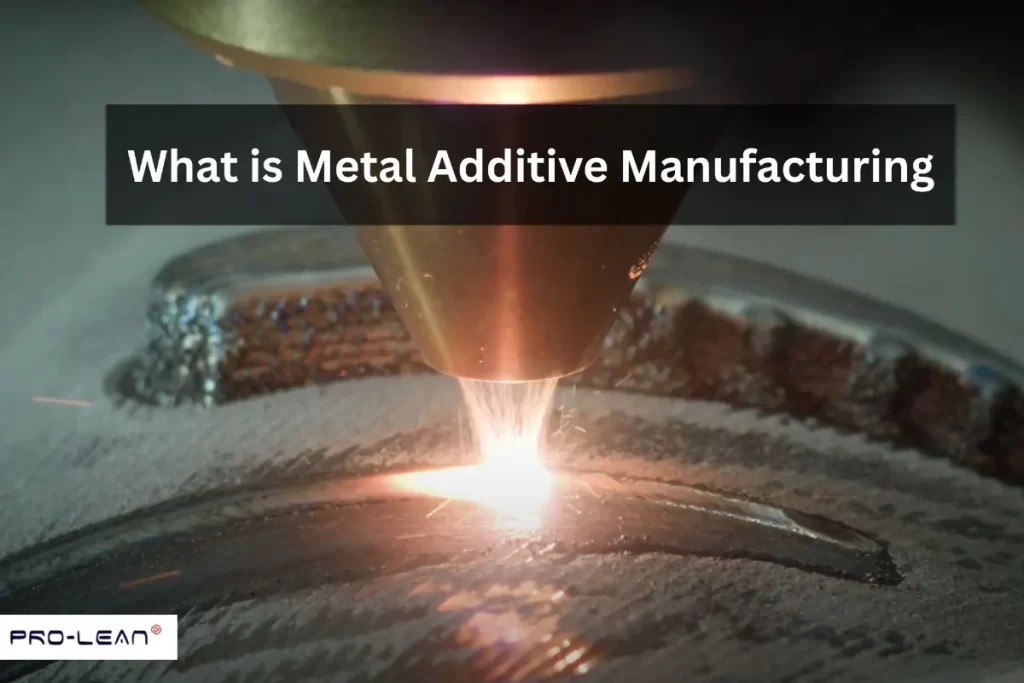
Metal Additive Manufacturing Process
Metal additive manufacturing is rapidly transforming the modern manufacturing landscape. This method involves building complex metal parts by adding layers from a digital model using laser or thermal energy deposition. This is especially true for industries like aerospace, automotive, medical, and tooling, where precision, customization, and design complexity are critical.
Unlike traditional subtractive methods, this innovative process builds parts layer by layer from a digital model using laser or thermal energy, making it ideal for producing complex geometries with minimal material waste.
Industries are increasingly turning to metal additive manufacturing to speed up prototyping, reduce production lead times, and create lightweight yet high-strength components. This minimizes material waste, lowers costs, and enables the production of intricate designs that traditional methods can’t achieve.
At ProleanTech, we’ve been at the forefront of this shift—offering both CNC and metal additive manufacturing solutions. Our advanced capabilities have helped businesses enhance efficiency, drive innovation, and stay competitive in a fast-evolving market.
This blog post will guide you on metal additive manufacturing and its types and benefits. So, without further ado, let’s get into the topic.
Additive Machining Metal: Bridging Traditional and Advanced Manufacturing
Traditional metal manufacturing methods, or subtractive methods, remained the undisputed king in the metal industry for ages. It involves cutting from a large solid block. After going through a series of steps, including casting, forging, and moulding, you get the final metal piece.
However, this method had certain disadvantages, including material wastage and design limitations.
That’s why additive machining metal is opted for. As the name indicates, it involves joining material to make a complex 3D printing structure, usually layer upon layer. Besides this, you have the freedom to shape metal in design.
Here is a one-on-one comparison of subtractive and additive metal manufacturing methods:
| Additive Manufacturing (AM) | Subtractive Manufacturing (SM) |
| Builds parts layer by layer from metal powder or wire. | Starts with a solid block and cuts away material to shape the part. |
|
Minimal waste is produced. Uses only the material needed. |
High waste produced. Extra material is removed and often discarded. |
| Great for intricate, lightweight, and custom designs. | Best for simple, well-defined shapes. |
| Fast prototyping but slower for large production. | Faster for mass production but slow for custom parts. |
| High initial costs (machines, materials, post-processing). | Cheaper for large-scale production but costly for small batches. |
| Needs post-processing (machining, polishing) for high precision. | Offers better accuracy and smoother surfaces. |
| Best for aerospace, medical implants, and complex prototypes. | Best for automotive, mass production, and heavy-duty parts. |
But what if you have to manufacture in bulk and don’t have a budget? Both additive and subtractive methods can coexist. The hybrid manufacturing approach includes custom 3D printing and CNC machining to make complex shapes with high precision.
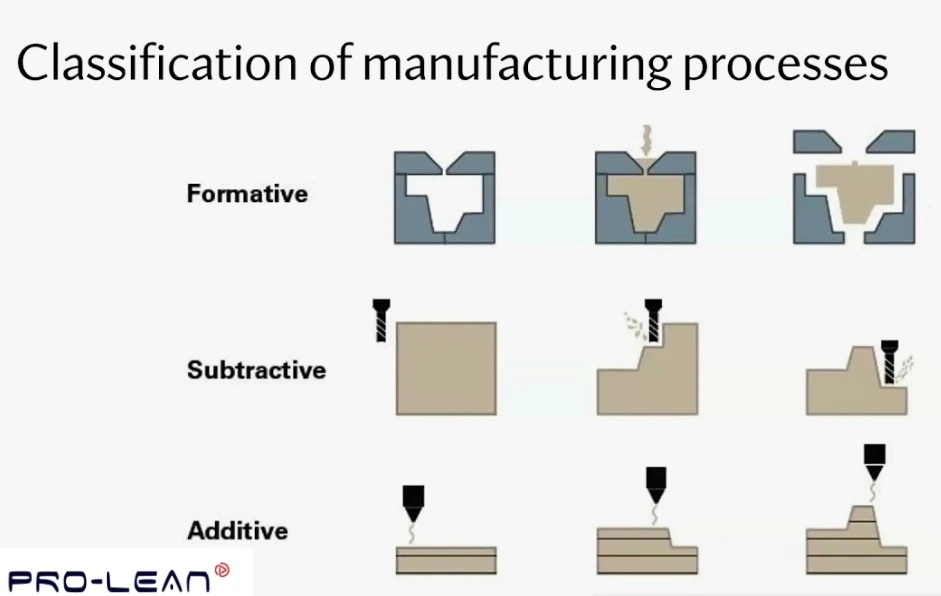
Manufacturing Process Classification
Aluminium injection molding gives the design freedom, whereas CNC machining lets you finish the product with high accuracy. Both of the methods, when combined, give customization opportunities.
Now that we know what additive machining metal and subtractive metal manufacturing are, let’s get to know the additive manufacturing pros and cons.
Additive Manufacturing Pros and Cons
Unlike traditional metal manufacturing methods, the additive method is basically layering to build the metal. And part geometry is always defined digitally through computer-aided design (CAD). Here are the pros and cons of the additive metal manufacturing method to increase metal production with high precision.
| Pros | Cons |
| Can create complex, custom designs | Expensive machines and materials |
| Wastes less material compared to traditional methods | Some materials and processes have limitations |
| Speeds up prototyping and production | Requires extra finishing work (smoothing, strengthening) |
| Allows on-demand and small-batch manufacturing | Quality control and regulations can be tricky |
Read the complete comparison on additive vs. subtractive manufacturing.
Try Prolean Now!
Types of Metal Additive Manufacturing: From SLM to Hybrid Systems
There have been multiple types of metal additive manufacturing since the 1990s when the first patent for direct metal laser sintering (DMLS) was filed. So, let’s start with DMLS.
1. Selective Laser Melting (SLM) / Direct Metal Laser Sintering (DMLS)

SLM/DMLS Process Diagram
SLM and DMLS 3D printing use a high-power laser to fuse the powdered metal layer by layer. The only difference in both metal manufacturing methods is that SLM fully melts the metal powder, while DMLS sinters (partially fuses) it.
SLM requires pure metal powders as it achieves an entirely homogenous melt pool, resulting in fully dense parts with superior mechanical properties. Meanwhile, DMLS works well with metal alloys and does not require full melting, which reduces internal stresses and makes it better suited for functional prototypes and production parts that need heat treatment for enhanced properties. Here are the benefits of both methods:
- High strength and density
- Suitable for complex designs
2. Power Bed Fusion (PBF)

Powder Bed Fusion Process
As the name indicates, the power bed fusion involves using thermal resources to consolidate powdered material. The process occurs in a controlled environment to prevent oxidation and ensure material integrity. It’s suitable for metals like stainless steel, Aluminum, and Cobalt-chromium. Here are the key advantages of PBF:
- Applicable to a wide range of metals
- Produce complex geometries and are therefore widely used in industries
3. Electron Beam Melting (EBM)
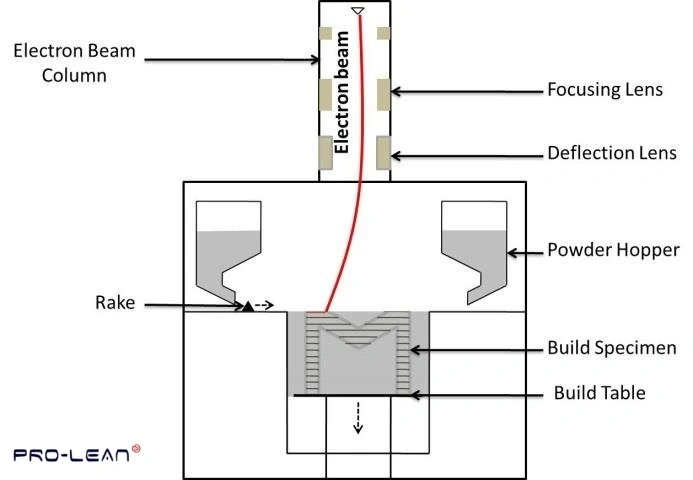
Electron Beam Melting (EBM) Diagram
In Electron Beam Melting (EBM), an electron beam is used as the source of heat instead of a laser. It operates within a vacuum environment and operates at high build chamber temperatures. The high temperature reduces residual stress and oxidation during printing. Therefore, this process is highly efficient for reactive metals like Titanium and Nickel-based superalloys.
With EBM, you can get the following advantages:
- Less degree of bedding due to high temperature
- Good for thick parts that require high performance
4. Binder Jetting
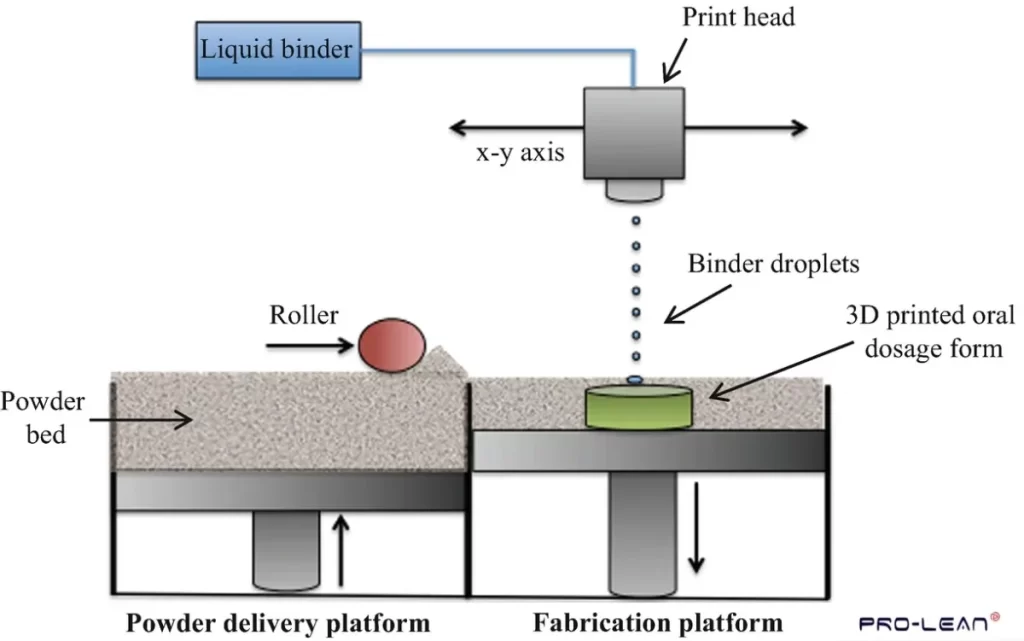
Binder Jetting 3D Printing Process
In this type of metal additive manufacturing, the liquid binder is selectively deposited to bind powdered materials. Unlike other processes, binder jetting works at room temperature to reduce thermal stress and distortion.
Binder jetting supports a wide range of metal powders, such as stainless steel and nickel-based superalloys. The benefits of binder jetting are:
- Cost-effective metal manufacturing method
- Suitable for mass production
5. Directed Energy Deposition (DED)

Directed Energy Deposition (DED) Diagram
In DED, the feedstock material is melted via a focused thermal source as it is deposited. This allows precise layer-by-layer buildup and is ideal for repairing worn-out metal parts and building from scratch. DED offers the following benefits:
- Use a wide range of metals
- Modify existing metal parts
Now that we know what metal additive manufacturing is and its types, let’s get to know the future of this market.
Try Prolean Now!
Metal Injection Molding (MIM): Bridging AM and Traditional Manufacturing
Metal injection molding (MIM) is a way to integrate additive and traditional manufacturing to improve efficiency and production without breaking out your bank.
MIM combines powder metallurgy and plastic injection molding to produce complex metal parts. It’s used for the mass production of intricate metals without compromising the precision. This process is especially useful in industries like medicine, automotive, and aerospace, where complex machinery is used.
Let’s compare AM with MIM:
| Metal Injection Molding (MIM) | Metal Additive Manufacturing (AM) |
| Lower cost for high-volume production | Higher cost per part, but cheaper for low-volume or custom parts |
| Best for mass production of small, intricate parts | Best for low to medium production or complex, one-off designs |
| High-density, strong, and durable parts | Similar strength but may need post-processing for full density |
| Limited by mold design, but allows for fine details | More design freedom – Can create complex, lightweight structures |
| Fast for large batches, but mold creation takes time | Faster for prototypes and small runs, but slower for mass production |
| Small, detailed parts in large volumes (e.g., medical, automotive) | Customized, lightweight, or high-performance parts (e.g., aerospace, medical implants) |
Injection Molding Services in AM Workflows
Hybrid manufacturing enhances the efficiency and lifespan of materials in different industries. One of the approaches is to integrate Additive Manufacturing (AM) and injection molding to improve the production and repair processes for gas turbines and hydrogen infrastructure.
Besides this, Direct Energy Deposition (DED) repairs nickel-based superalloy turbine blades by rebuilding worn sections. This strengthens the components and increases their service life. Laser cladding further restores blade geometry with precision, improving creep resistance and ensuring durability under high temperatures.

Injection Molding Process Diagram
Another innovation is Hybrid Metal Manufacturing, which uses AM to produce complex metal components while Metal Injection Molding (MIM) refines them for large-scale production. This is particularly useful in:
- Gas turbines
- Hydrogen infrastructure
- Aerospace energy systems
By integrating AM with subtractive and traditional repair methods, businesses can achieve:
Cost-effective turbine maintenance
Faster repair turnaround
Greater design flexibility for performance optimization
Improved mechanical properties for extreme conditions
Metal Additive Manufacturing Market: Trends and Projections
Here are the key trends of the metal additive manufacturing market to see how the industry will evolve in the future:
- The metal 3D printing market is growing fast because more industries are using it. Companies in aerospace, medical, car making, and energy find it very useful
- Big companies like GE Additive, EOS, and 3D Systems are leading the industries with new ideas
- New metal materials and faster printing make metal 3D printing better and easier to use.
- AI and machines are helping with design, making parts, and checking quality.
- Recycling metal powder is helping make 3D printing better for the environment.
Custom 3d printing provides numerous benefits including reduced production time, decreased material waste, design flexibility for complex geometries, and cost-effective prototyping solutions. Metal 3D Printing Cost can be offset by these advantages in the right applications.
ProleanTech has been helping clients leverage these advantages for years, delivering customized metal printing solutions that result in stronger components, faster time-to-market, and competitive advantages through innovation.
Our clients consistently experience enhanced product performance, reduced assembly requirements, and expert guidance throughout the entire manufacturing process.
Conclusion
That’s all you need to know about additive metal manufacturing. Metal additive manufacturing is usually not the first choice for mass production due to high costs and slower production speeds. Instead, it is more commonly used for prototyping, low-volume production, and complex designs that traditional methods struggle to achieve.
At ProleanTech, we’ve been helping clients across industries bring their most complex designs to life with precision and speed. Our metal additive manufacturing services empower businesses to reduce lead times, minimize material waste, and accelerate innovation—ensuring they stay ahead in a competitive market.
However, there is high cost of metal 3D printing which could be an issue. So, to overcome this issue, Metal injection molding is a perfect fit that gives the precision like AM and is cost-effective. So, check out our injection molding services to get started today.
FAQs
Q1. What is additive metal manufacturing, and how does it work?
Additive metal production is a technique of making metal components by layering them. These are layered one at a time using a 3D printer. This technique adds material only where it is needed.
Q2. What are the main benefits of metal additive manufacturing?
Metal additive manufacturing has numerous advantages over conventional metal-working. It minimizes material waste and facilitates the manufacture of intricate shapes. Also it accelerates the production process. It supports customization, which is suitable for different industries.
Q3. What are the common defects associated with metal additive manufacturing?
As with any technology, there are some drawbacks to metal additive manufacturing. Pores and warping through heat stress are common defects. Occasionally, printed objects can be deficient if poorly designed.
Q4. How large is the market for metal additive manufacturing?
The metal additive manufacturing market is expanding rapidly as industries increasingly use 3D printing. Industries are creating demand for high-performance metal components. Analysts forecast the market to expand further as more companies venture into its advantages.
Q5. What industries stand to gain the most from metal additive manufacturing?
Many industries benefit significantly from metal additive manufacturing. Aerospace industries employ it to produce light yet durable aircraft components. The medical industry benefits from personalized implants and prosthetics. The automotive industry employs it for high-performance automobile parts. Even energy and defense industries depend on it for tough, intricate components that conventional methods cannot easily achieve.

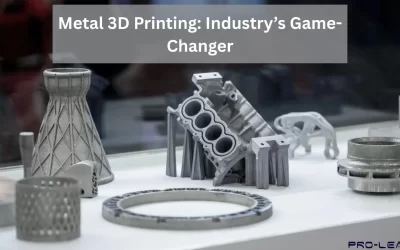

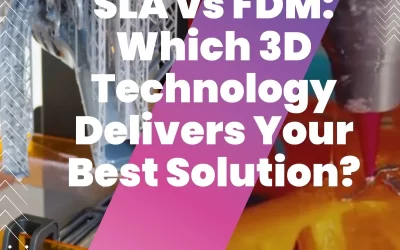
0 Comments